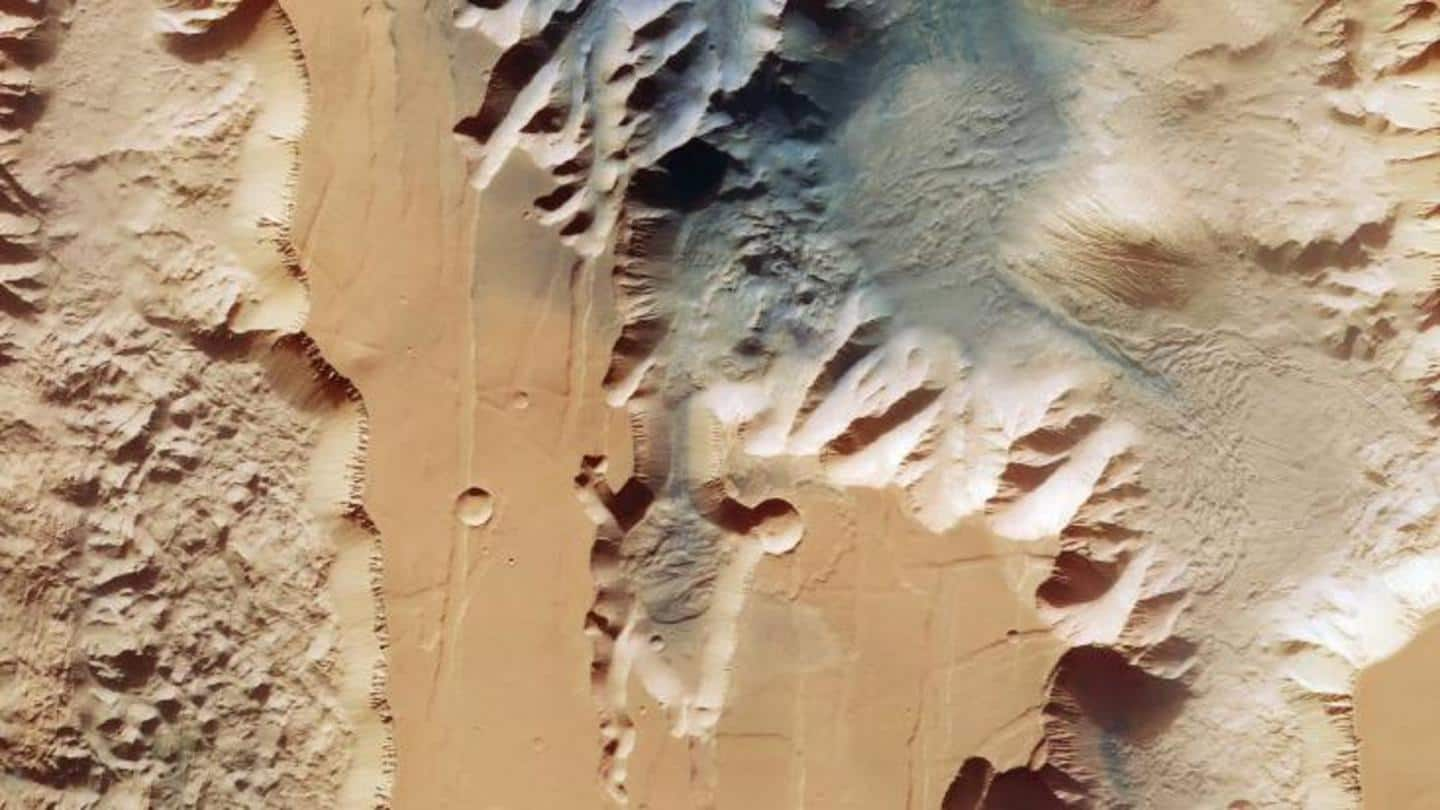
Mars Express captures spectacular images of solar system's biggest canyon
What's the story
The European Space Agency's (ESA) Mars Express has some pictures for us that'd make the Grand Canyon look like unremarkable. The images that reveal two gouges of Mars' Valles Marineris canyon system have caught the attention of the whole world. Scientists believe that the images will help answer some pertinent questions about Mars. Also, they are simply spectacular.
Context
Why does this story matter?
No other planet in the solar system has managed to fascinate humans as much as our red neighbor. Its potential to be a second home for us in the future has increased studies and researches about Mars in recent times. The new findings about the Valles Marineris will be helpful in future expeditions to Mars, both crewed and uncrewed.
Finer details
The two ruptures are called 'Ius' and 'Tithonium'
The image captured by the Mars Express shows two ruptures in the Valles Marineris canyon system - the 840km-long Ius chasma on the left (north) and the 805km-long Tithonium chasma on the right (south). The image also revealed a row of jagged and eroded mountains within Ius. The dark hue of Tithonium on the top part is attributed to Tharsis volcanic region.
Information
Valles Marineris is almost 10 times longer than Grand Canyon
The Valles Marineris is often compared to the Grand Canyon in Arizona, US. The Martian canyon is 4,000km long, 200km wide, and up to 7km deep. It is around 10 times longer, 20 times wider, and five times deeper than the Grand Canyon.
Significance
Mars is now tectonically extinct
Mars is considered tectonically inactive, with its crust fused into a single layer now. This is in sharp contrast to Earth, which has plates shifting. According to scientists, the Valles Marineris was formed as a result of widening cracks between plates. This makes the canyon system very interesting for those looking into the geology and geological history of Mars.
Findings
Detection of sulfate-bearing minerals suggest presence of water
In the Tithonium chasma, Mars Express detected the presence of sulfate-bearing minerals. Scientists assume that this could mean the presence of water (at least partially) in the chasma at some point. The mountains in the chasm are softer and weaker than the rock around them. Some of the features to the lower right of some visible mountains suggest a recent landslide activity.